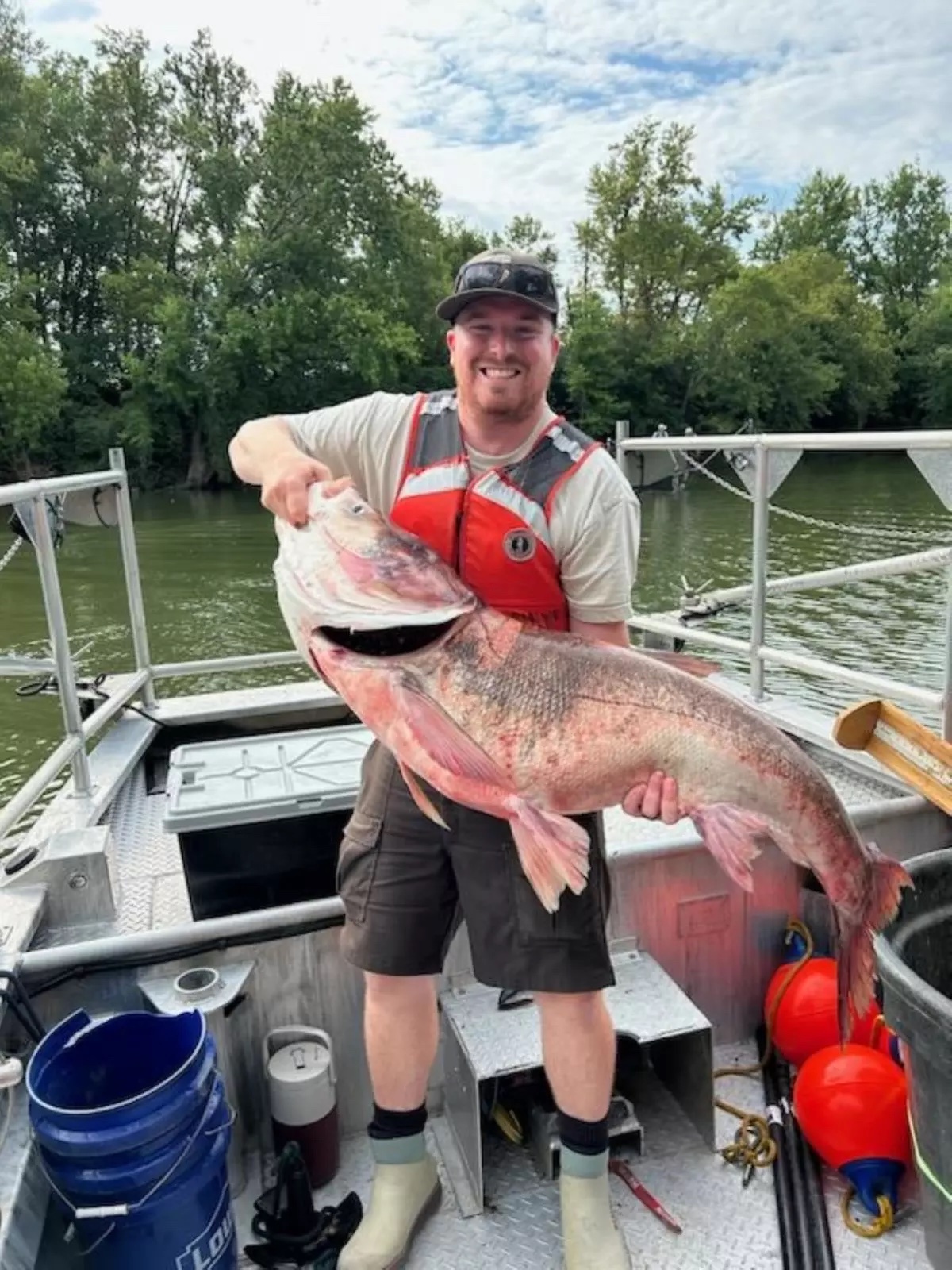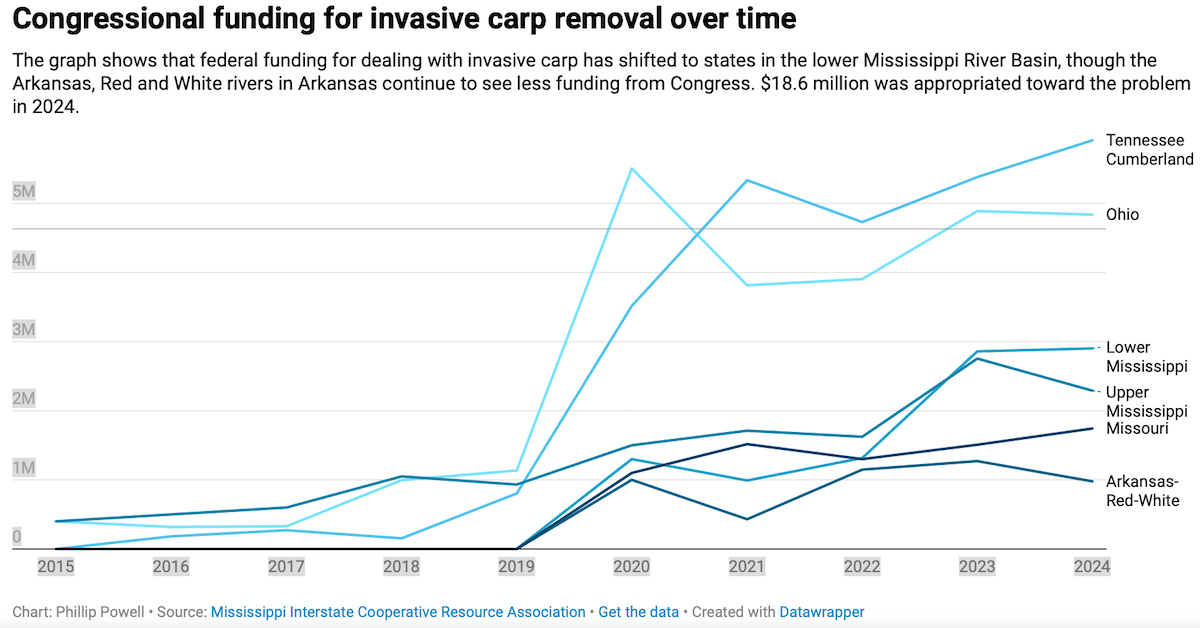
Keith Lusher 08.22.25

If you’ve never considered eating carp, Arkansas state officials say it might be time to give them a try. Invasive Asian carp have transformed from an accidental introduction in the 1970s into one of the Mississippi River Basin’s most pressing threats. Now, states are abandoning dreams of complete eradication in favor of more practical approaches that could turn these unwanted fish into a valuable commodity.
The four species commonly called invasive carp (bighead, black, grass, and silver carp) were originally brought to the United States for aquaculture pond management. After escaping into waterways, they’ve spread throughout the Mississippi River system, with silver carp becoming particularly notorious for their startling habit of launching their 40-pound bodies up to 10 feet out of the water when disturbed.
These fish pose a serious threat to native species like bass and catfish by consuming the plankton that young native fish need to survive. Their rapid reproduction rate and voracious appetite allow them to quickly dominate waterways. Illinois has reported reducing carp density in upriver areas by 95 percent over 13 years, including removing 750,000 pounds during a single 10-day sweep in 2023. However, the fish don’t respect state boundaries, making this a basin-wide challenge.
The economic stakes are enormous. Congress has invested $31 million in fiscal year 2024 alone for control efforts, plus nearly $226 million for an electric lock system at Brandon Road dam near Chicago to protect the Great Lakes. The system combines electric barriers that shock approaching fish with powerful currents that push them downstream.
States are increasingly looking to commercial fishing as a sustainable long-term solution. Illinois has led the way with an $8,000 grant program for carp processors and increased funding for commercial fishers. Arkansas is following suit with a pilot program aiming to remove 1.6 million pounds of fish, five times more than they’ve harvested over the past four years.
The challenge lies in creating consumer demand. While carp are a dietary staple in China, Americans remain skeptical. The fish carry a stigma as bottom-feeders despite their rich, white meat. Even Illinois’s 2022 rebranding campaign, renaming Asian carp as “Copi,” hasn’t significantly boosted demand.
However, alternative markets show promise. Pet food manufacturing could provide a breakthrough, as carp can be ground whole into nutritious kibble. The fish are low in contaminants since they eat at the base of the food chain, and they provide omega-3 fatty acids beneficial for pet health.

Current commercial incentives often fall short. Arkansas pays fishers only $0.18 per pound, while research suggests $1.13 per pound is needed for effective results. Processing infrastructure also remains limited, with Arkansas having no commercial fish processing plants and the nearest facility in Mississippi currently not accepting carp.
Despite these challenges, experts believe reducing carp populations by 50-75 percent is achievable through sustained commercial fishing efforts. As one researcher noted, “If we could reduce their population sizes down…50 to 75%, that would be good. That would probably be about the best we could do.”
Success will require coordinated efforts across multiple states, robust processing infrastructure, and creative marketing to convince Americans that controlling invasive carp benefits both their waterways and their dinner plates.
Trending Products













